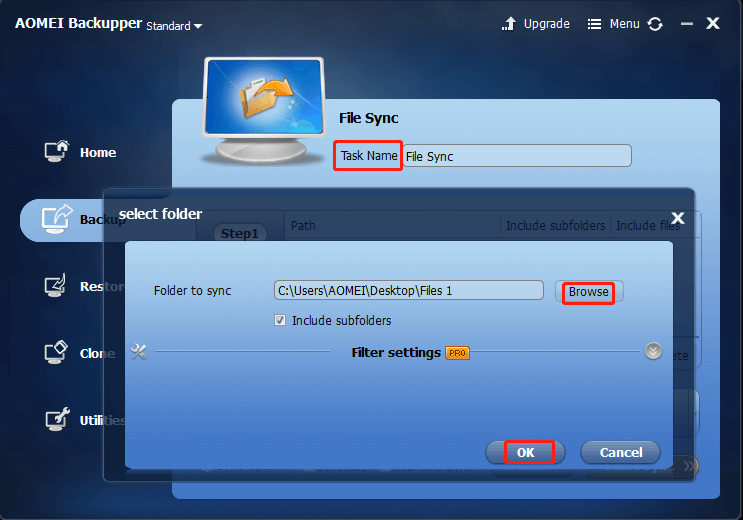

- #Windows 7 sync folders offline update#
- #Windows 7 sync folders offline Offline#
- #Windows 7 sync folders offline windows#
Sync Center displays the offline files and synchronized files, as well as a list of sync conflicts. To manage your offline files, open the control panel by double-clicking the ‘Sync Center’ icon on the desktop, or by typing control panel into the run dialog box. Where Does Sync Center Store Offline Files?

It should be set to one in decimal, because you do not want offline files to fill up your hard drive.

The value you need to change is 32-bit DWORD called Start.
#Windows 7 sync folders offline windows#
To change the default setting, you will need to make a small tweak to the Windows Registry. Click the Enable offline files link and restart your computer. To enable offline sync files, go to the Sync Center and click on the Offline files link. You can choose to enable or disable the sync feature if you have administrator rights. You can access them anytime, without having to rely on network connectivity. When offline files are used, they are stored in the Offline Files folder in the C:windowsCSC folder. This is particularly helpful when the server is not connected or is slow. They keep copies of network files for your convenience. Offline files are part of the Sync Center feature in Windows 10. Where Can I Find Offline Files in Windows 10?
How Do I Restore Offline Files in Windows 10?. How Do I Open Sync Center in Windows 10?. Where Does Sync Center Store Offline Files?. Where Can I Find Offline Files in Windows 10?. If the sync operation failed, you’ll need to intervene. Afterwards, click on ‘Enable offline files’. If there is an error, click ‘View conflict’. In the Files section, click on the ‘Enable offline files’ button. To enable offline file synchronization, click on the Sync Center icon and then select ‘Offline files’. Tap ‘OK’ twice to confirm your selection. Right-click these folders and select ‘Map network drive’. This will give you a list of shared folders. In the network location field, type the IP address or hostname. After entering your password, type in the name of your network. You’ll be asked to enter your admin password. Next, select ‘Network’ from the start menu. First, locate the %systemroot%CSC directory. If you have trouble enabling offline files, the only way to enable them is to perform a Registry tweak. You can manually sync files and folders by right-clicking on an offline folder and selecting ‘Sync.’ Or, you can automatically sync files and folders by going to the Sync Center and choosing ‘Enable offline files’. The setting (I am guessing you have found now, judging by the post underneath!! but for anyone who comes across it) is GPO/User/Windows Settings/Folder Redirection, then one for each of the redirected folders for W7.Offline file sync is an option available in Windows 10. Think then it was only some registry changes to ensure the soundcard was always active even when a phono jack wasn't plugged in! Haha how random, hadn't realised it was you! Hope the policies made some sense (:/ !!!), I spent the best part of a holiday condensing and rationalizing the policies!Īll policy changes should have been central on the laptops and desktops (think there was one for XP and one for >W7), I tended not to do anything locally which wasn't through MDT. confusing!ĭespite searching I could not find where you set up the redirection to the user home drive other than in AD. So a the same user logs on to the same machine and gets the old and new mappings. I think you setup the GPO at your old workplace to get the settings from a admx file that is local for the offline file sync. We met once at my interview before you left. If you alter the path to the redirected folders in a GPO (making sure the move the contents to the new location is ticked) isn't it supposed to take care of this for you? It's quite slow though! Might be worth staging if you can get it to reliably work. I used this script in testing successfully the migration of users with offline file sync CscRenameItem.vbs - The Storage Team at Microsoft - File Cabinet Blog - Site Home - TechNet Blogs Is there a way of automating the migration of users with offline files? Logging onto 100 users machines is going to be a big administrative task So I cannot get the user to run the script as it fails as the new home share sync already exist. If a user logs on to the machine they get a new home drive url sync as well as an old home drive url sync. My thought was that a user can run a shortcut to call the script and migrate their offline file syncs. #Windows 7 sync folders offline update#
I managed to get a successful migration when logging onto the machine as an admin and running the script after data migration and an home folder update I used the syntax below for the script as I understand that offline files sync using wmi object notĬscRenameItem.vbs /OldItemPath: /NewItemPath: I used this script in testing successfully the migration of users with offline file sync I have been working on migrating 100plus user home drives who use laptops and have offline file sync







 0 kommentar(er)
0 kommentar(er)
